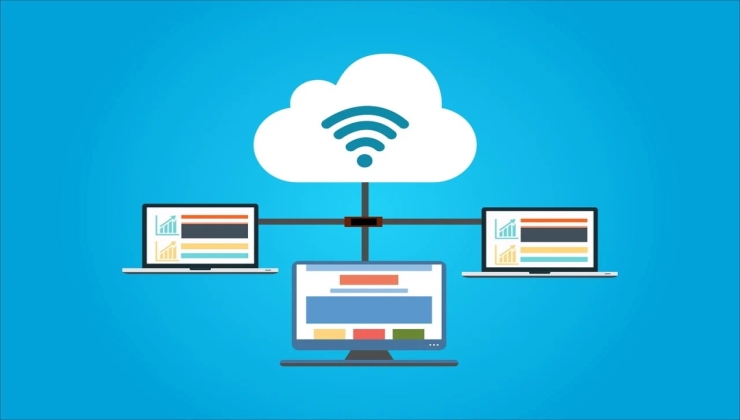When moving to the cloud, businesses might encounter different challenges like overspending or performance issues due to resource allocation errors. To catch these problems early or prevent them altogether, incorporate a user-friendly analytics system.
This setup comes with easy-to-use dashboards and proactive alerts to keep everyone in the loop and prepared to act. The dashboards mainly highlight important technical metrics that affect how well your cloud solution performs and its costs. With ongoing monitoring and improvements, you could ensure a hassle-free experience as you navigate through the cloud at every step.
The difficulty in accurately evaluating cloud workload
Moving from on-premises to cloud systems without proper planning can deplete a year’s budget quicker than anticipated. This is because accurately assessing workload performance in the new cloud setup is challenging. Additionally, disparities exist between on-premises and cloud provisioning, potentially resulting in misguided resource allocation decisions if not promptly rectified.
Here’s a methodical way to avoid overspending or performance issues. This is how you can do it.
Gathering on-premises performance data for comparison
Begin by gathering data – metrics, logs, and traces – from your on-premises setup to build a detailed performance profile.
- Logs contain detailed data on system activities and events. For instance, observe the database making 10 user data requests for one page load.
- Traces monitor the progress of particular processes across the entire system, such as an order processing trace in an e-commerce system. They follow the entire order processing workflow, logging each step like order creation, payment processing, and shipment. Traces aid in pinpointing bottlenecks or failures in the process to avoid them in the future.
- Metrics record system performance at a particular moment. Work Metrics gauge page load time, throughput, errors, and overall performance. Resource Metrics, such as CPU utilization, assess the system’s current status, including factors like usage.
Establishing accurate benchmarks for sizing cloud environments
Rather than copying your on-premises setup to the cloud, set specific benchmarks using your current metrics, traces, and logs. These benchmarks guide us in understanding your system’s anticipated values and usage patterns in the cloud.
For instance, you might set a CPU utilization benchmark at around 80% for regular tasks to maintain efficiency without overloading resources. Additionally, aim to maintain error rates below 1% for over 99% of all transactions.
These benchmarks act as guides for continuously monitoring performance and making future adjustments, ensuring your cloud system runs optimally.
Establish alerts that prompt timely responses and are relevant to the situation at hand
After setting accurate benchmarks with your on-premises data, concentrate on enhancing performance and managing costs in the cloud. Your team can get alerts via a robust system to uphold software health and address deviations from benchmarks. Your alert system is supposed to offer two types that you can use independently or together:
- Use fixed alerts to stop exceeding a set absolute value. For instance, if the search index size is usually 2GB but occasionally reaches 4GB with cloud changes, set an alert if it surpasses 5GB. This alert is vital for spotting and addressing urgent issues promptly.
- Implement adaptive alerts, which are dynamic and tailored to detect and respond to abnormal metric behavior over time. For example, in cloud migration, adaptive cost alerts help control expenses by analyzing factors like storage, bandwidth, and computing resources. If your typical monthly cloud budget is $2,500 but you’re gradually adding more resources, these alerts automatically adjust your spending limit, up to $3,000 annually, without notification. However, if there’s an unexpected surge, such as a sudden increase in database storage usage, your team will be promptly alerted, similar to fixed alerts. This approach enables flexible and intelligent cost management, adapting to your changing cloud resource requirements.
By using both types of alerts in your monitoring system, you’re prepared to quickly address issues and reduce unnecessary alerts.
Collecting diverse data poses challenges for managing performance and costs effectively
Using multiple monitoring tools presents a challenge due to their different data outputs. This makes it hard to analyze performance problems or cost overruns together and delays finding the root cause of incidents or overspending.
To solve this, bring together different tools into one analytics platform. This platform combines technical data from various monitoring tools using APIs and shows it on a customizable dashboard for the right people. It helps move from reacting to being proactive in monitoring, stopping issues before they become big problems.
Improving monitoring by integrating AWS/Azure tools
For improved ongoing monitoring post-cloud migration, your specialists can integrate AWS and Azure monitoring tools into your customized system. This allows convenient access to all your data through a single platform.
When all data is centralized, it’s easier to manage cloud performance and costs, preventing overprovisioning and surprise expenses.

